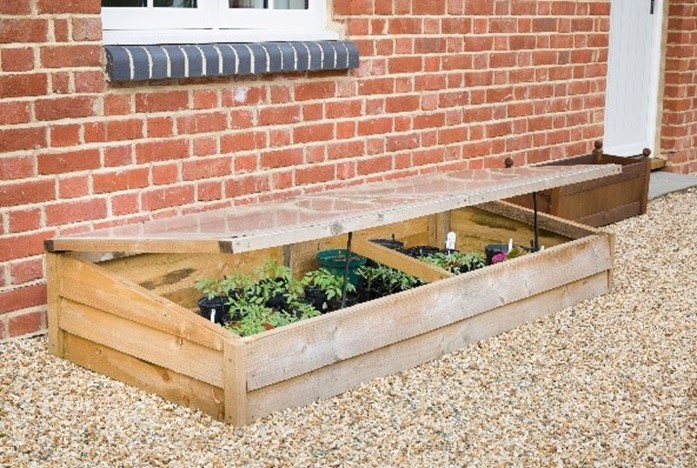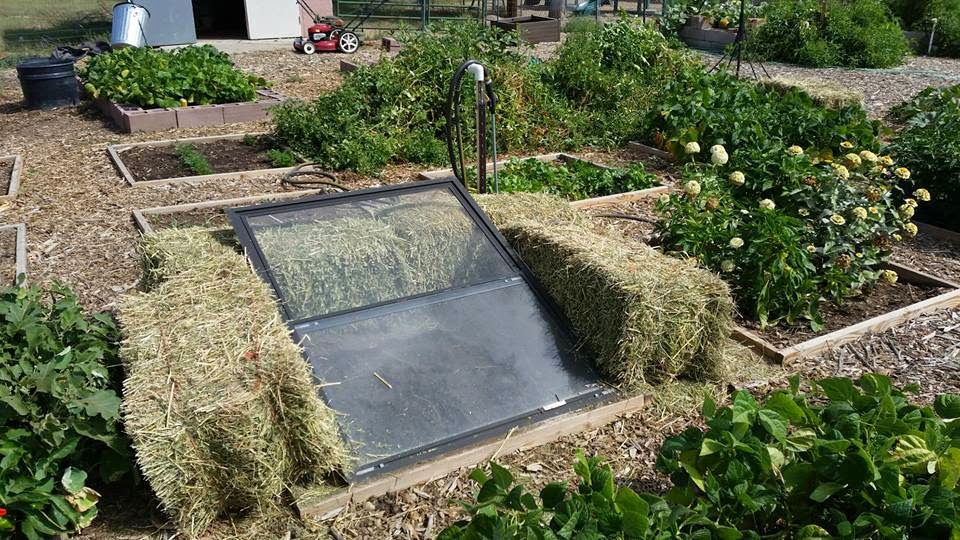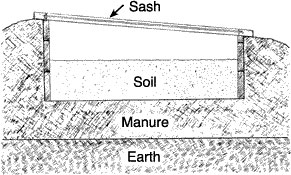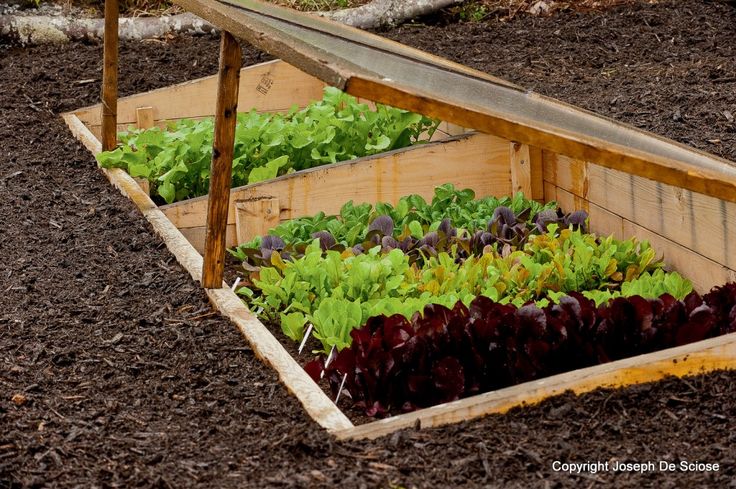Extend the Growing Season with a Cold Frame
- 2024-01-05
- By mkirk
- Posted in Horticulture, The Garden Buzz
By Judy Kunz, Colorado Master Gardener
Relatively easy to build from scratch or assemble from a purchased kit, a cold frame can provide a respite from the dreary days of winter. For those of us who love to plant a seed and witness the miracle of germination, winter can be a long period of waiting for the chance to see nature at work. Days are shorter, colder and frequently overcast. Yet the urge to watch a seed germinate and send up its first leaves can be a powerful motivation.

A cold frame could be the “scratch” for that “itch.” It’s like a mini greenhouse, its purpose being to extend the growing season well into the fall, and/or to start seeds in the spring on a smaller scale by controlling the growing conditions without the expense of purchasing or the work of building a greenhouse.
A cold frame can be a temporary structure fashioned from wood scraps and topped with a translucent plastic or glass cover to let light penetrate and protect plants from colder temperatures. It can also be as easy as a few hay or straw bales positioned as an insulating framework, with a sheet of plastic on top for protection from the cold and allowing light in for germination and growth. Concrete blocks or old window frames are also commonly used materials. A wide array of cold frames is available for sale online, with do-it-yourself plans also beckoning to those who have a talent for building. In addition, most big box stores carry a selection of already-assembled or easy-to-assemble cold frames.

For protection from the elements and maximum sun exposure during the shorter days of spring and fall, the ideal location for a cold frame is against a south or southwest facing brick or concrete wall, wood siding or fence, with a translucent protective cover angled toward the sun. The wall or fence will absorb some of the heat from the sun, aiding in plant germination and growth. Because the sun’s rays are lower at our northern latitude, it is important to ensure that the front, or sun facing side, is built so it does not block the incoming light. In addition, placing the structure close to the house makes it easier to reach and maintain on a daily basis.

The bulk of the cold frame structure can also be located below grade with the top extending above soil level. This will aid in controlling temperature swings. A layer of manure sandwiched below the structure can help keep seedlings stay warm in the coldest weather. The microbial activity that is breaking down the manure releases a certain amount of heat that will aid in minimizing temperature dives during cold nights. It may also be necessary to add a layer of insulation in the form of an old blanket or gardening insulation material during colder nighttime weather. In addition, an outdoor incandescent light on a weather-proof cord or heating cables can be instrumental in keeping the temperature optimal during cold snaps. These materials are also available online.

Ideal crops for growing in a cold frame:
- Lettuce, chard, kale, collards, spinach, arugula, endive, beet greens
- Scallions, leeks, carrots, radishes
Use a cold frame to start these crops in the spring for later transfer to the garden:
- Cabbage, broccoli, cauliflower, tomatoes, tomatillos, peppers, eggplant, melons, squash, kohlrabi, cucumbers, watermelon, celery
- Herbs
- Annual flowers such as petunia, zinnia, marigold
- Perennial flowers and plants
Additional jobs for a cold frame:
- Forcing bulbs to bring inside when ready to bloom
- Hardening off plants started indoors in the spring before moving outside
Don’t be left out in the cold this winter and spring. Stretch the growing season and enjoy the rewards of a cold frame. For more information, refer to these links: extensive list of seeds and building a cold frame.
Horticulture Resources
- Garden Buzz Archives
- CSU Extension Resources
- Colorado Master Gardener Program
- Foothills to Plains Native Plant Master Program
- Native Bee Watch Community Science Program
- The Co-Hort Blog
- PlantTalk Colorado
- Soil Testing
- Plant Select
- Emerald Ash Borer
- Japanese Beetle
- Colorado State Forest Service
- Ask an Expert


